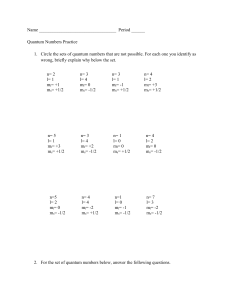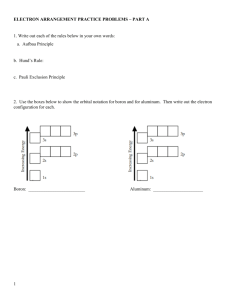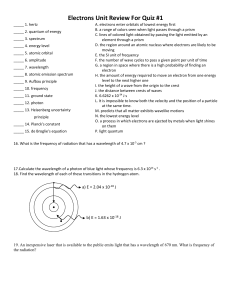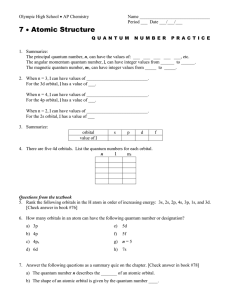Quantum numbers notes
advertisement
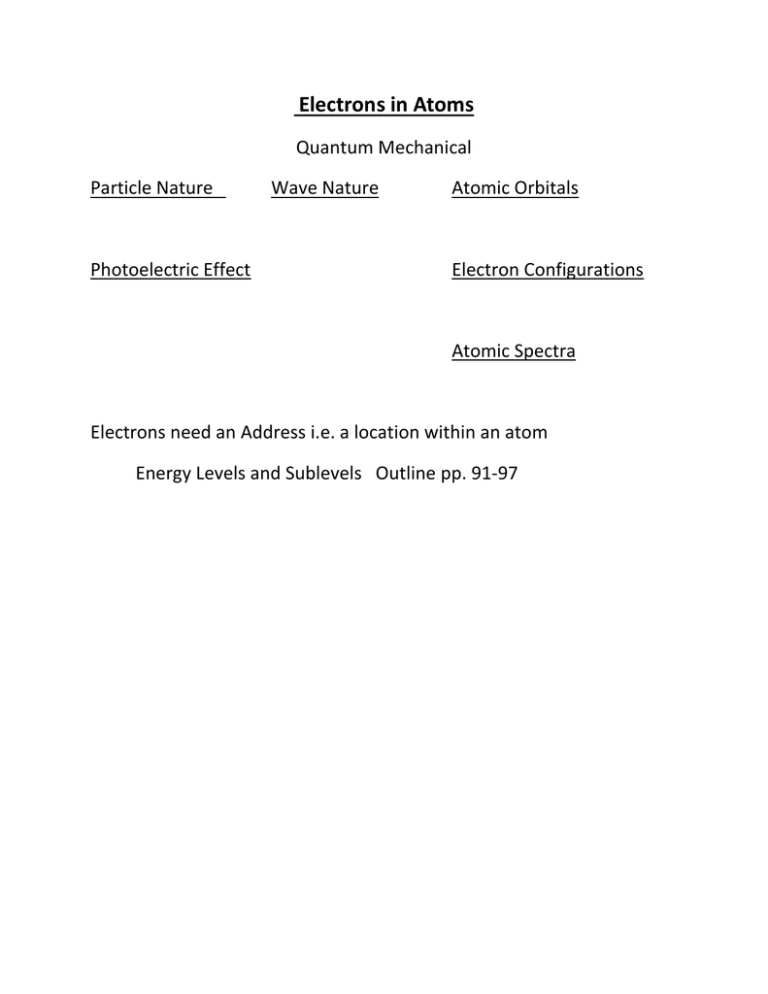
Electrons in Atoms Quantum Mechanical Particle Nature Photoelectric Effect Wave Nature Atomic Orbitals Electron Configurations Atomic Spectra Electrons need an Address i.e. a location within an atom Energy Levels and Sublevels Outline pp. 91-97 Quantum #’s Pauli Exclusion Principle States that every e- has one specific set of 4 Q #’s 1st n Principal Q # or principal Energy level n= 1-7 2nd l angular Q # Shape s, p, d, f 3rd m magnetic Q # s-1 p-3 pxpypz 4th s d-5 f-7 d1-d5 f1-f7 spin Q # 1st e- in + 1/2 N 2nd e- in orbital -1/2 S e- e- s N Rules for Quantum #’s And electron configurations 1) Pauli Exclusion Principle Each e- has only one set of Q #’s n, l, m, s 2) Aufbau: e- go into the lowest energy level 1st & lowest sublevel n=1 before n=2 & s before p 3) Hund’s Rule: Orbital’s of equal energy fill with 1 electron each before doubling up. (degenerate orbital’s) NOT Px Py Pz Px Py Pz 4) Heisenberg Uncertainty Principle Cannot determine the position & velocity of an e- at the same time 5) Schrödinger Wave Equation Quantum Theory Explains atomic behavior Ψ2 Outline the rest of Ch. 4 Stability of e- configuration Least stable Most Stable Examples: Half full S.L. Full sublevel Full outer level any e- configuration Half full S.L. s1, p3, d5, f7 Full sublevel s2, p6, d10, f14 Full outer level s2 p6 d10 f14 Electron Shift for: Cr, Mo, W from s2d4 s1d5 Cu, Ag, Au from s2d9 s1d10

